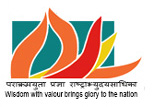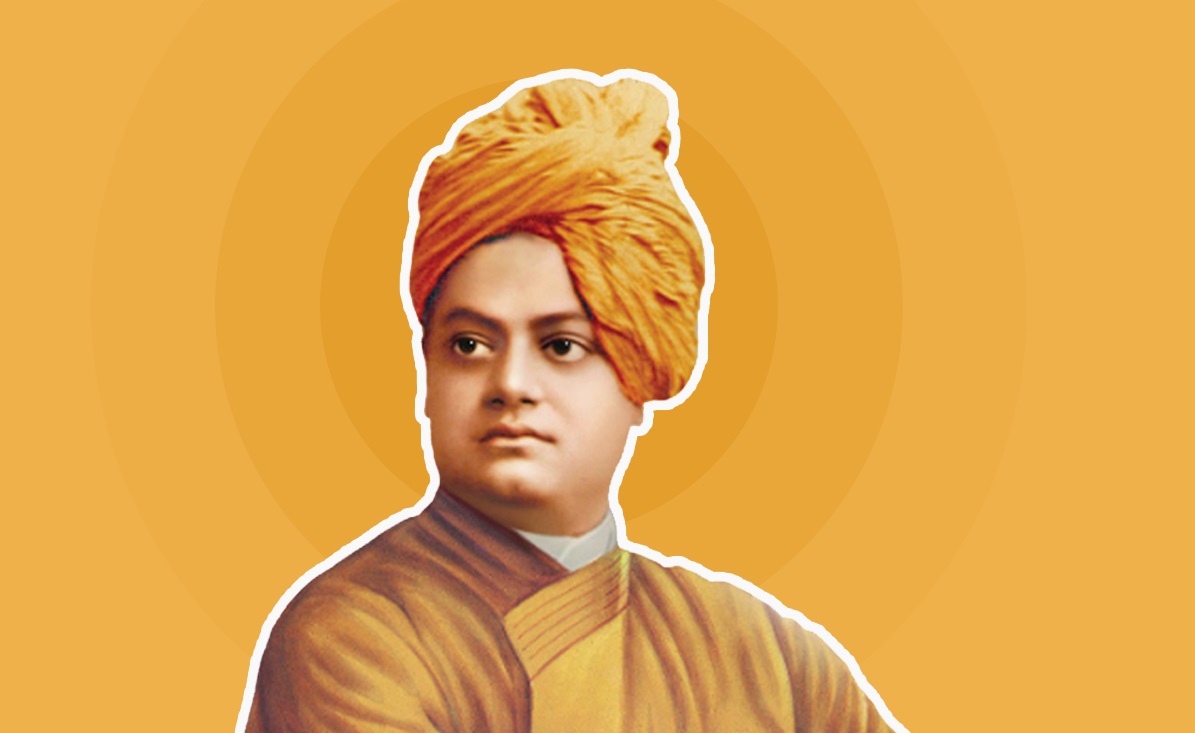The medical tornado “coronavirus” being declared a pandemic by the World Health Organisation and after hundreds of confirmed deaths and lack of cases,[i] the Wuhan-originated strain has become a midpoint of news, reports, gossip, and rumors for every single one in real and virtual world. These types of medical emergencies are not new to India or the world as a whole; it is just that developing proper medicines will take a few more months; let us recall the Bengal Plague and Swami Vivekananda’s ‘Plague Manifesto’ (1898), which helps us both psychologically and emotionally. Swami Vivekananda was among the few who steadfastly supported his people during widespread fear and anxiety. Swami Vivekananda’s ‘Plague Manifesto,’ available in Bengali and Hindi, provided a much-needed remedy for those under strain. The manifesto quickly reached the masses through the dedicated efforts of his disciple, Sister Nivedita, and the brother monk Swami Sadananda. The Swami’s first message was clear and loud:” free from fear as fear is the biggest Sin.” The Swami, in his manifesto, writes, “Always keep the mind cheerful. Everyone will die once. Cowards suffer the pangs of death again and again, solely due to the fear in their own minds.‘[ii] He urged us to thrust aside this fear: “Come, let us give up this false fear and, having faith in the infinite compassion of God, gird our loins and enter the field of action. Let us live pure and clean lives. Disease, fear of an epidemic, etc., will vanish into thin air by His grace.” [iii] He further adds the means to remain hygienic: “Always keep the house and its premises, the rooms, clothes, bed, drain, etc., clean. Do not eat stale, spoiled food; take fresh and nutritious food instead. A weak body is more susceptible to disease. During the period of epidemic, abstain from anger and from lust — even if you are householders. He also asked not to panic and pay any heads to the rumours. [iv]
The Ramakrishna Mission, founded approximately a year before the plague struck Calcutta, dedicated all its efforts to relief work. Sister Nivedita led the campaign, supported by Swami Vivekananda’s other monastic disciples, who tirelessly worked day and night to serve the people of Calcutta.
Swamiji urged, “Brother, if there is no one to help you, then send information immediately to the servants of Shri Bhagavan Ramakrishna at Belur Math. There will be no dearth of help that is physically possible. By the grace of the Mother, monetary help will also be possible.”[v]
In March 1899, Calcutta experienced its second outbreak of the plague.[vi] The mission swiftly established a committee to provide services to the masses.[vii] The services provided were so systematic and selfless that they became a significant chapter in Calcutta’s history. As a master organizer, Swami Sadananda quickly immersed himself in this extensive effort. He personally ventured into the slums, initiating the cleanup of the lanes in Shambazar, Baghbazar, and other neighboring areas. The Swami enlisted the help of a group of young sweepers and, alongside them, took on the responsibility of cleaning the areas. [viii] For financial assistance, Sister Nivedita issued an appeal through the newspapers on April 5.[ix] Sister Nivedita, alongside Swamiji, delivered lectures on the plague. On April 21, she addressed students at the Classic Theatre, discussing “The Plague and the Duty of Students.”[x] Sister Nivedita asked, “How many of you will volunteer to come forward and help in the labour of cleansing huts and bustees ? In such matters, we all stand and fall together, and the man who abandons his brother is taken by despair himself . The cause of the poor is the cause of all today –let us assert it by practical action”[xi]. The words of Sister Nivedita and Swamiji inspired the young listeners, who were eager to offer their services in response. Approximately fifteen students volunteered to participate in the plague relief efforts. The work was organized, with Sister Nivedita distributing printed handbills that outlined preventive measures for combating the plague. Due to the overwhelming amount of work and a simultaneous shortage of volunteers, Sister Nivedita took the initiative to clean the lanes herself. Observing her dedication, the local young men felt compelled to assist and joined her in sweeping the rubbish and clearing the pathways.
Dr. Radha Gobinda Kar, a prominent physician of the time and an eyewitness to Sister Nivedita’s efforts, remarked:
“one day , when i returned to home at noon-time in the month of Chaitra after seeing the patients , I saw a European lady sitting on a dusty chair near the door. She was Sister Nivedita”.[xii][ix]She was here to get some information. On that morning, Dr. Kar had been to see a plague-stricken child in a slum at Baghbazar. Sister Nivedita inquired about the child, who was in critical condition. She ran and reached the locality in no time, and irrespective of the precautions taken by the doctor, she took the child into her lap. The child’s mother had already died. Sister Nivedita temporarily moved to this hut to take care of the child. Day and night, she remained engaged in nursing the child, ignoring the possible danger. She even white-washed the walls herself.
Sister Nivedita was gathering information when Dr. Kar had visited a plague-afflicted child in a Baghbazar slum that morning. Upon hearing of the child’s critical state, she hurried to the area without delay. Despite the doctor’s warnings and precautions, she took the child into her arms. With the child’s mother having already died, Sister Nivedita temporarily moved into the hut to care for the child, committing herself to round-the-clock nursing while ignoring the risks. She even personally whitewashed the walls.[xiii]Her dedication to nursing the child never wavered, even when death seemed inevitable. After two days, the child passed away in Sister Nivedita’s arms, calling her “Ma Ma” in its final moments, mistaking her for its mother. The article “The Plague” from her book “Studies from an Eastern Home” presents a detailed account of her work during the plague. This represents just one example of her compassionate presence, a familiar sight throughout various localities. In her letters to an English friend, Mrs. Coulston, she says: “There is endless work. Only to live here is in itself work.[xiv] Sister Nivedita and her team diligently continued their efforts for an entire month before successfully controlling the disease.
Thus, let us not panic, fear, and spread rumors; instead, we should accept the preventive measures issued by the state and government of India.
References
[i] Coronavirus COVID-19 Global Cases by Johns Hopkins CSSE”. ArcGIS. Johns Hopkins CSSE. Retrieved March 13, 2020.
[ii] The Complete Works of Swami Vivekananda/Volume 9/Writings: Prose and Poems(Original and Translated)/The Plague Manifesto P. 331
[iii] The Complete Works of Swami Vivekananda/Volume 9/Writings: Prose and Poems(Original and Translated)/The Plague Manifesto P. 331
[iv] The Complete Works of Swami Vivekananda/Volume 9/Writings: Prose and Poems(Original and Translated)/The Plague Manifesto P. 331
[v] The Complete Works of Swami Vivekananda/Volume 9/Writings: Prose and Poems(Original and Translated)/The Plague Manifesto P. 331-32
[vi] Nivedita of India published by the Ramakrishna Mission Institute of Culture, Kolkata,2016, Pg 27 -30
[vii] Atmaprana Pravrajika, Sister Nivedita published by Pravrajika Swarupaprana, Secretary, Sister Nivedita Girl’s School, Calcutta Pg 74-76
[viii] Nivedita of India published by the Ramakrishna Mission Institute of Culture, Kolkata,2016, Pg 27 -30
[ix] Atmaprana Pravrajika, Sister Nivedita published by Pravrajika Swarupaprana, Secretary, Sister Nivedita Girl’s School, Calcutta Pg 74-76
[x] Atmaprana Pravrajika, Sister Nivedita published by Pravrajika Swarupaprana, Secretary, Sister Nivedita Girl’s School, Calcutta Pg 74-76
[xi] The Complete Works of Sister Nivedita published by the Ramakrishna Sarda Mission Sister Nivedita’s School, Calcutta, Vol-5, Pg 220
[xii] Atmaprana Pravrajika, Sister Nivedita published by Pravrajika Swarupaprana, Secretary, Sister Nivedita Girl’s School, Calcutta Pg 74-76
[xiii] Nivedita of India published by the Ramakrishna Mission Institute of Culture, Kolkata,2016, Pg 27 -30
[xiv] Atmaprana Pravrajika, Sister Nivedita published by Pravrajika Swarupaprana, Secretary, Sister Nivedita Girl’s School, Calcutta Pg 74-76
(Nikhil Yadav is a State Youth Head at Vivekananda Kendra, Uttar Prant. He obtained his Masters in History from the University of Delhi and is pursuing COP in Vedic Culture from Jawaharlal Nehru University.)
(The views expressed are the author's own and do not necessarily reflect the position of the organisation)

